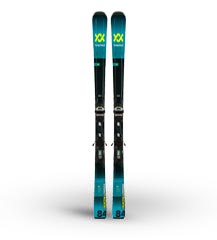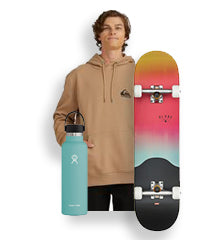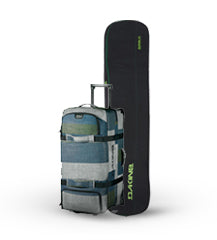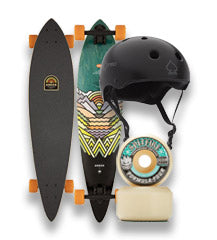The Complete Guide to Jet Ski Safety and How to Stay Safe on the Water
March 08, 2022 6 min read
Fast & Free Shipping Available 🙌
The Complete Guide to Jet Ski Safety and How to Stay Safe on the Water
Jet Skiing is a favourite pastime for water enthusiasts. When it comes to water sports, using jet skis or other PWCs, such as personal watercraft, can be a lot of fun but also risky if not done safely. Taking extra precautions and safety measures will help you stay out on your Jet Ski or Personal Water Craft (PWC) for longer and reduce the risk of injury. The majority of jet ski-related injuries occur in young adults and children. The most common types of injuries are fractures, concussions, sprains/strains, and cuts/bruises. The most common causes of reported accidents are operator error, operator inattention, improper lookout, excessive speed and navigational violations.
Read our complete guide to jet ski safety to ensure your time out on the water is both enjoyable and safe.
What are the Different Types of Jet Skis?
It is important to know the different types of jet skis out there so that you can find the best one for your needs. There are a few main types of jet skis: recreational, tow sports, high performance, and personal watercraft.
Recreational Jet Skis
Recreational jet skis are the most popular; they are agile and stable on the water with great storage. The size of the jet skis in this category is standard. While not the fastest or most responsive, these personal watercrafts (PWDs) have top speeds ranging from 65 to 99 kilometres per hour, making them suitable for families and new drivers alike. If you’re unsure, you can always try jet ski rentals before buying your own.
Tow Sports Jet Skis
Towing sports like water skiing and wakeboarding necessitate the use of jet skis in this category. Tow sports jet skis and personal watercraft are desirable because of their high resale value. Look for a Ski Pylon feature that raises and lowers the tow rope in relation to the pump.
High-Performance Jet Skis
For the time being, novice jet skiers should avoid this section. High-Performance Jet Skis are better suited to experienced jet ski racers as they are equipped with extremely powerful engines, capable of reaching 130 km/h in just three seconds.
How to Stay Safe on a Jet Ski?
Safety is of the utmost importance when you are on a jet ski. You need to be prepared for anything that might happen and know what to do in case of emergencies.
- Always wear a life jacket, even if you know how to swim. It can save your life in the event of sudden water emergencies like capsizing or being thrown from the jet ski. If possible, also wear a helmet.
- Avoid riding at night and during inclement weather, as it can make it difficult for others to see you
- Put on your lanyard for safety (safety key). In the event of a falling off the jet ski, this device will automatically shut down the vessel's engine.
- Avoid riding with strangers or unfamiliar people, as they may not have your safety in mind and could put you at risk
- Keep away from other boats, waves, and swimmers that may also be dangerous obstacles on your path
- Maintain your jet ski, so it stays in top shape, reducing the risk of breakdowns or issues
- Don’t drink alcohol while operating a jet ski or PWC
- Don’t speed, and always use common sense when riding a jet ski
How to Safely Ride a Jet Ski
A jet ski is a type of personal watercraft that can be propelled by a jet engine or propeller. It is designed for speed and maneuverability. Jet skis are popular for recreation and racing. Jet skis are very powerful machines, and it takes some skill to operate one safely. For most people, the safest way to ride a jet ski is to have someone more experienced show them how.
Jet skis are vehicles, so they need to be registered. In most cases, you also need a license to operate them. However, it’s not one size fits all. Just like road laws, jet ski laws change depending on your state. Even if you follow all applicable laws, you still need to follow and participate in jet ski etiquette in order to be truly safe. A courteous and polite jet ski driver should know the following:
- The rules of the water must be obeyed.
- Drive defensively.
- When passing other boats or riders, always err on the side of caution and keep a close eye on your surroundings.
- Keep an eye out for swimmers and people in the water.
Jet Ski Safety Gear You Need To Wear
Jet skis are a perfect way to enjoy the water, but they can also be dangerous. It is important to wear the right safety gear while operating a jet ski.
The following list includes some of the most important safety items you should bring with you on your next jet ski ride:
- Wetsuit or neoprene suit
- Helmet
- Gloves
- Goggles or sunglasses
Wear a Life Jacket for Jet Ski Safety
When it comes to water sports like jet skiing, many participants don't wear life jackets, but this is an essential requirement. Make sure your life jacket is properly fitted before getting in the water. Too-large jackets can cause water to push the jacket up towards your face, making it more difficult to float. You may have difficulty staying afloat if your jacket is too small. With children, these precautions are essential. By making sure your children wear a life jacket that is appropriate for their height and weight, you can help prevent accidents like drowning and injuries. Ensure that your life jacket has been approved by safety and buoyancy levels before you get in the water.
Protect Yourself by Wearing a Helmet While Jet Skiing
If you're thrown from the jet ski, wearing a watercraft or waterski helmet will help protect your head. If you happen to hit something in the water while wearing a helmet, you will be protected from flying debris. Children under the age of 18 are strongly advised to wear jet ski or water ski helmets. Even though accidents are inevitable, using watercraft helmets can greatly reduce the risk of injury. While watercraft helmets may not be required by law in some states, it is strongly recommended that all PWC and jet ski riders wear one at all times while in motion. Make sure you know the rules in your state.
Keeping a Well-Maintained Jet Ski
Accidents are frequently caused by malfunctioning or broken equipment. Maintaining your equipment is the best way to prevent it from breaking down. Before and after you take your jet ski out on the water, it's essential to go over the maintenance tips and checklist. In order to launch safely, make sure you have checked your cables, fuel and oil levels and started your engine on land. Before storing your jet ski in the cooler months, make sure it has been properly winterized.
Jet Skis and Alcohol Don't Mix
Jet Skis are a great way to have fun in the water, but alcohol and jet skis don't mix. Alcohol slows your reaction time and impairs judgment, which can make it difficult to operate a Jet Ski safely. If you've been drinking, do not get on a jet ski or personal watercraft. Even if you think you can handle the effects of alcohol, it's never worth the risk. A common cause of watercraft accidents is the consumption of alcoholic beverages. Alcohol can seriously impair your decision-making abilities, reaction time, and overall coordination. A designated driver is a good idea if you've had a few too many. When intoxicated, stay off the water and away from jet skis and other personal watercraft.
Don’t Speed On Your Jet Ski
Another one of the most common causes of jet ski-related accidents is speeding. When you're going fast, it's easy to get too close to another jet ski rider or person in the water. Keep a safe distance between yourself and the people around you, and give yourself plenty of room to stop. To avoid serious accidents on the water, keep a safe speed and distance. Precautions can prevent the vast majority of jet ski mishaps. Make the most of your summer on the water by following the few simple safety rules mentioned above.
The Importance of Safety When Riding a Personal Watercraft and Proper Jet Ski Safety Gear
By now, you should understand the importance of safety when riding a personal watercraft and the proper jet ski safety gear you should have. Personal watercraft are becoming more popular in Australia every year. So keep your jet ski maintained, grab your safety gear and life jacket, follow the rules and etiquette to stay safe and have a great time out on the water!
MOST POPULAR
RISING POST
Leave a comment
Comments will be approved before showing up.
Also in Blogs

How to Kneeboard for Beginners: Tips, Tricks, and Safety Advice
August 21, 2025 11 min read

The Ultimate Guide to Snowboarding at Rusutsu Resort, Hokkaido
July 15, 2025 13 min read

10 Wakeboarding Accessories Every Rider Needs in 2026
June 16, 2025 9 min read








